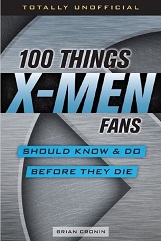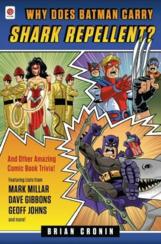Was Bill Russell Traded for the Ice Capades?
WOULD HARRISON NEED BROWN’S HELP TO GET THE ICE CAPADES IN ROCHESTER?
The Ice Capades were founded in 1940 by John Harris, owner of the Pittsburgh Gardens. Like his fellow arena owners, Harris also owned teams that played in his arena. His hockey team, the Pittsburgh Yellow Jackets, played in a variety of non-NHL hockey leagues. On March 31, 1936, Harris hired Sonja Henie, a Norweigian figure skater who was just coming off her third Olympic Gold Medal for Figure Skating at the 1936 Winter Olympics. The 24-year-old Henie had just turned professional after the 1936 World Figure Skating Championships in February of that year. Despite Pittsburgh just recently suffering a massive flood a few weeks earlier (water was as high as 46 feet!), the crowds came out in full force for Henie’s performance, which was just simply her Olympic routine. It was apparent that ice shows were going to be huge. By the end of the year, Henie was a superstar. A vaudeville-esque ice show called the Ice Follies came next in 1937. Harris realized that it would make sense to own his own ice show. I spoke to Harris’ nephew, John Harris Sheridan, and he explained how Harris’ good friend (and fellow arena owner) Walter Brown suggested that Harris turn to his fellow arena owners in the Arena Managers Association to help fund his plan. Not only would they all put up the capitol needed to create a competitive ice show, they would be able to better manage scheduling, which was a major problem for ice shows at the time. Traveling from Toronto to Los Angeles to Chicago to Boston to Denver was just too inefficient and ate up too many tour dates with traveling. Now they could arrange it so that this new show would start in Major City X and then play dates in cities surrounding Major City X on their way to Major City Y. While the Arena Managers Association made Harris’ plan a reality, he was the President and owner of the new company (which eventually was named the Ice Capades). They just each had a piece of the pie. So reports that say that the Arena Managers Associated created the Ice Capades are erroneous. By the end of the 1940s, performances of the Ice Capades and similar ice shows were drawing in larger audiences than even Major League Baseball!
So yes, by 1956, having the Ice Capades in your arena was clearly a big deal. In fact, when Walter Brown accidentally booked the Ice Capades on the same day he had a Boston Celtics game at the Garden in 1952, the Celtics game was pushed to midnight! I spoke with Don Watson, former ice skater and later lighting director and company manager of the Ice Capades, for insights over how the Ice Capades worked at the time. At each arena, they dealt with whoever was in charge of the biggest professional sports franchise in the area. In the case of Rochester, it would be Rochester Royals’ owner Lester Harrison. By 1956, the Ice Capades had purchased a competing ice show called the Ice Cycles. They maintained it under the name Ice Cycles for a few years before deciding to re-brand it as Ice Capades International. While this was never stated officially, it was pretty clear that this touring group was the “B” Squad to the “A” Squad that was the Ice Capades proper. The biggest stars were in the main Ice Capades touring group and the newest routines would debut in the main Ice Capades touring group. The Ice Capades touring season was basically the same as the NBA season (Fall to Spring). Well, according to Watson, the main Ice Capades touring group played in Rochester in their new building (as mentioned before, Rochester finally had a modern arena) from December 12-18 in 1955. This tour was a major success, bringing in over $200,000 over the week (it would have been even more but there was a large amount of free passes because it was the debut of the Ice Capades in the new building). During the next touring season, Harrison also had the Ice Capades from September 4-10 in 1956. In April of 1957, Harrison gave in to pressure to move his team to a bigger market (specifically a bigger market further west than the rest of the NBA) and moved the Royals to Cincinnati. In November of 1957, Rochester received Ice Capades International (they went back to having the main Ice Capades in 1958). Harrison acknowledged that Brown did, in fact, give him assistance with the Ice Capades at one point, noting to Terry Pluto:
It is true that I had the Ice Capades for two years, then I was in jeopardy of losing them. I was having trouble with the people who ran our building in Rochester, and Walter Brown did come down to talk to them, saying that I should have the Ice Capades. But this had absolutely nothing to do with the draft. Walter and I were friends and we did favors for each other all the time.
However, as noted above, the second year of the Ice Capades that Harrison mentions in this quote was after the NBA Draft. So any problem Harrison had with his arena owners would almost certainly have had to be about the upcoming 1957-58 season, not the already passed 1956-57 season. Harrison obviously was having issues with Rochester (after all, he ended up moving soon after), so it appears as though Harrison’s conflict would have been well after the April 1956 NBA Draft and therefore would not have been able to be the basis for a deal between Harrison and Brown for Russell.
Putting it all together, it seems that it was an open secret in the NBA that Harrison was not going to draft Russell with the number one pick, both for the money reasons but also because he already had a future Hall of Fame center in Maurice Stokes. Meanwhile, Rochester already had had the Ice Capades before the NBA Draft (and, by the way, Brown was not the President of the Ice Capades, as is often part of the story) and it does not appear that whatever conflict Brown helped him with occurred before the NBA Draft. In addition, since Harrison and Brown were good friends, it is reasonable to expect that Harrison would give Brown assurances regarding his draft decision if Harrison had decided to pass on Russell (and as reader Peter Masnik rightly noted, the Celtics did not actually make the trade until the Hawks had officially selected Russell. In other words, they did not trade for the #2 pick. They traded for Russell specifically, so that certainly also suggests that they weren’t positive that Russell was going to be selected #1, or else they would have just traded for the #2 pick BEFORE the draft).
In closing, as mentioned in the beginning, when you’re dealing with three men who can’t explain what precisely was said to each other fifty-seven years ago, you’re never going to be 100% certain, but the information that we do have certainly suggests that Auerbach exaggerated what happened to the point where I feel safe in stating that the legend is…
STATUS: False
As an aside, before their deal to acquire Russell, the Celtics forfeited their first round pick by using their territorial pick. Back in the old days of the NBA Draft, the NBA would allow teams to waive their first round pick before the draft and select any one player who played college ball within a 50-mile radius of the NBA team (this practice ended in 1965). The Celtics used their territorial pick on Holy Cross star forward Tom Heinsohn. They later drafted Russell’s University of San Francisco teammate K.C. Jones. So yes, in one single draft, the Celtics acquired three Hall of Famers! Not too shabby.
As one last aside, there are also rumors that the reason the Hawks were so willing to deal Russell for Macauley and Hagan is that Macauley and Hagan were White and the Hawks had an all-White team at the time. I don’t think you’ll ever get a definitive answer on that one. It wouldn’t exactly be SHOCKING if true, but I don’t think you’ll ever get a clear cut answer (Russell certainly believed that to be the case, but, again, while Russell was an amazing man, both on and off the court, he is not the perfect judge of what other NBA executives privately believed in 1956).
Feel free (heck, I implore you!) to write in with your suggestions for future installments at bcronin@legendsrevealed.com.
Pages: 1 2
Tags: Bill Russell, Boston Celtics, Harlem Globetrotters, Ice Capades, Lester Harrison, Red Auerbach, Rochester Royals, St. Louis Hawks, University of San Francisco, Walter Brown






[…] an in-depth look into the trade-tale by Bill Cronin, he […]
Bill,
I believe that the way the trade went down was Macauley and Hagan to the Hawks for Russell (by pre-arrangement) after the Hawks had drafted Russell at number 2, rather than the Celtics simply trading for the Hawks’ number 2 pick. This suggests that Auerbach feared that the Royals might take Russell, in which case the Hawks pick would hardly be worth Macauley and Hagan. This caution on Auerbach’s part suggests there was no “Ice Capades” deal in which Rochester had agreed to pass up Russell. So this is further support for your conclusion.